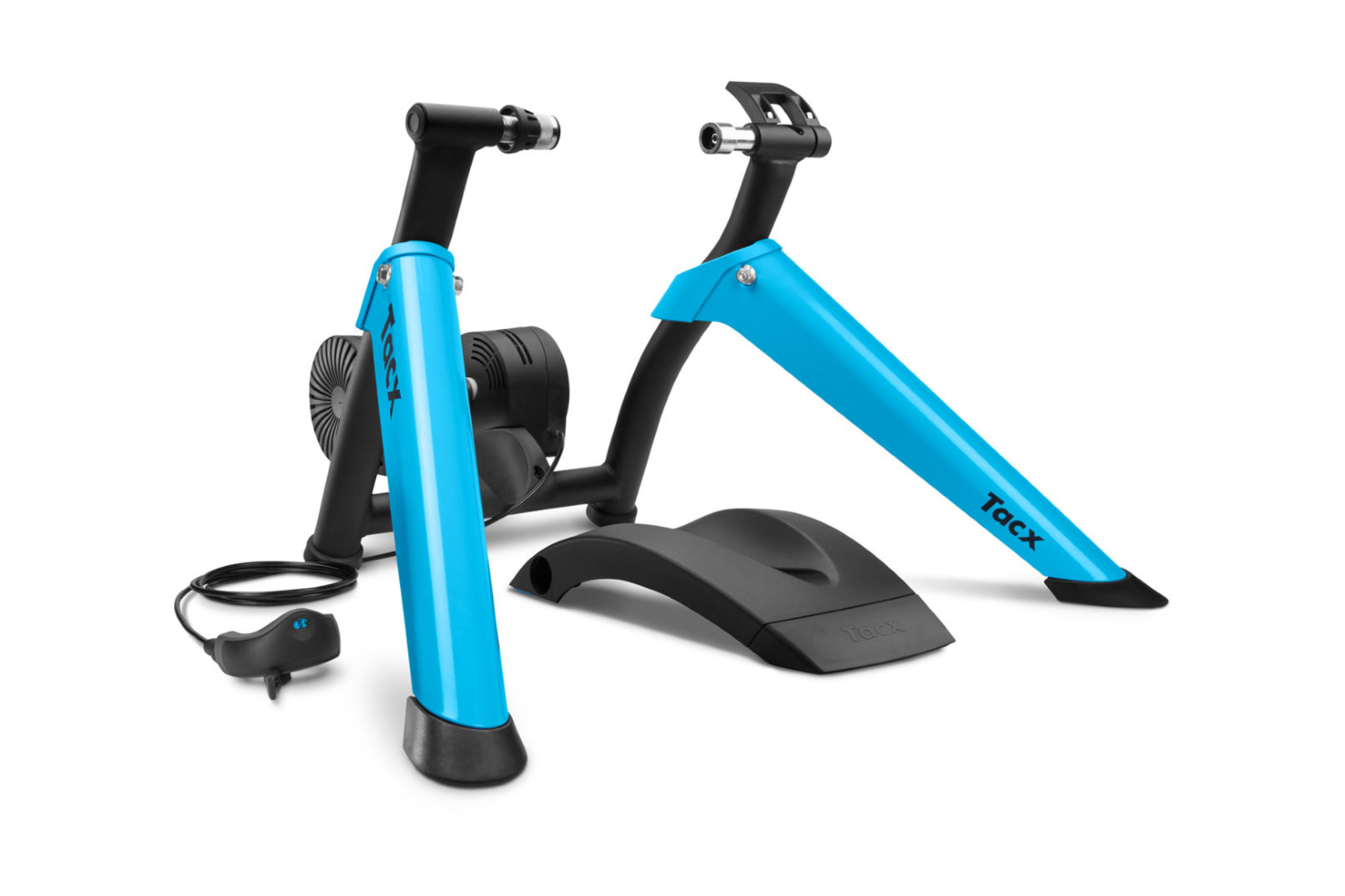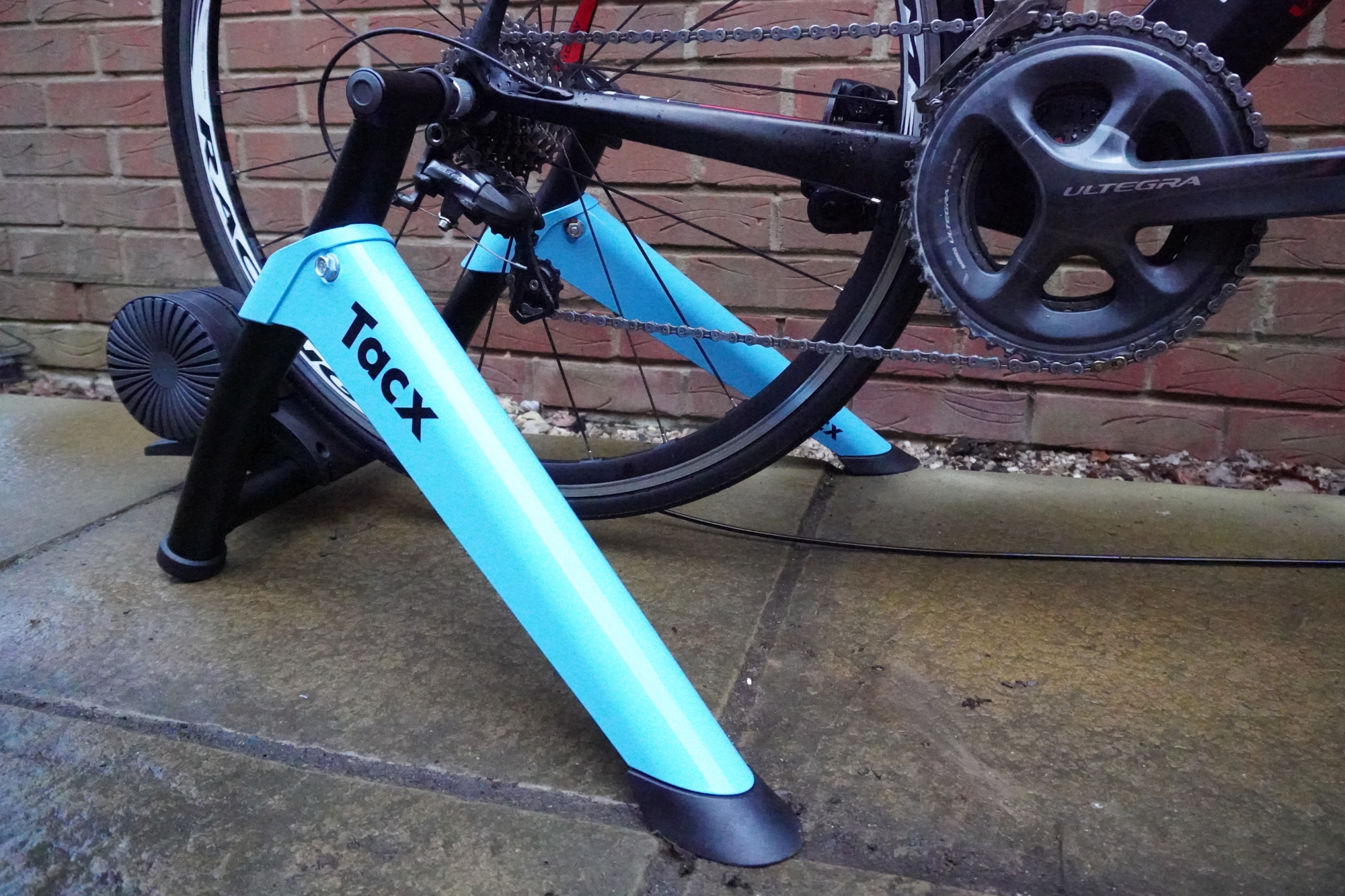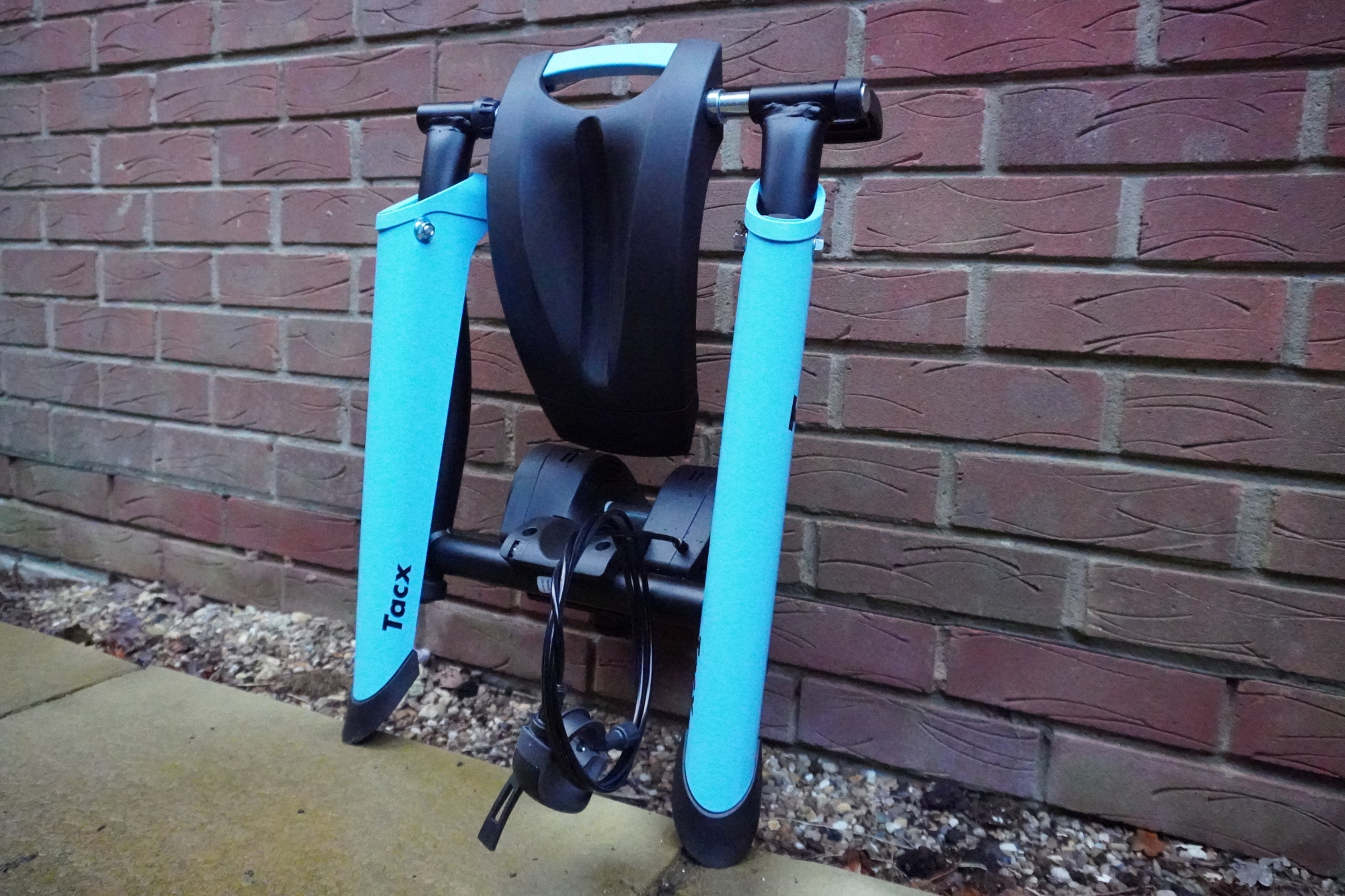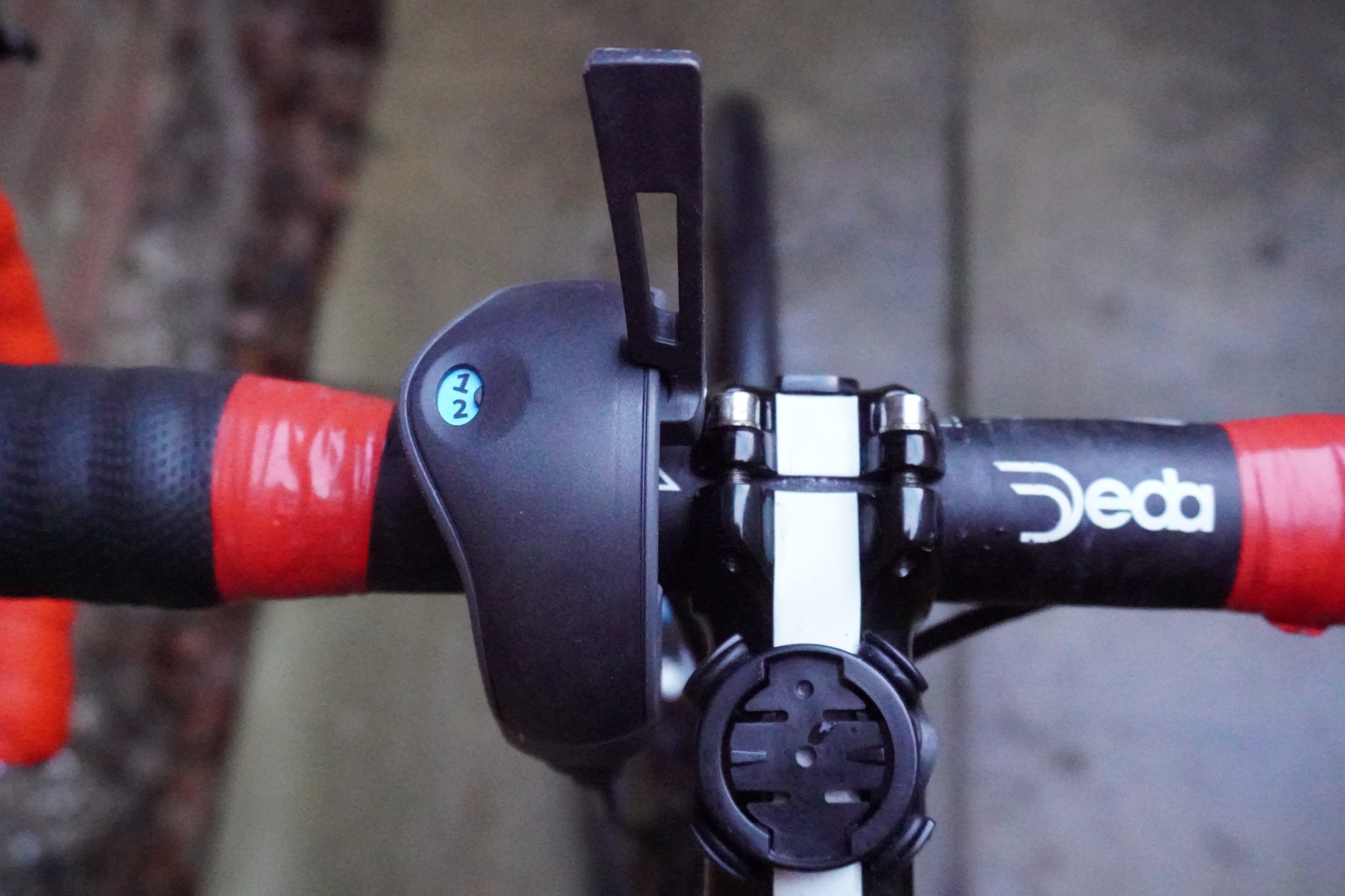Tacx Boost turbo trainer review
Occupying the lowest tier of Tacx’s turbo range, the Boost is a no-frills wheel-on trainer

The Tacx Boost is a reliable and functional 'dumb' turbo trainer, delivering a reasonable ride feel, range of resistance and noise levels. However, its price makes it a hard buy to justify. The Tacx Flow Smart costs only £40 more, yet offers power readings, can simulate climbs of up to 6% and will connect with virtual training platforms, such as Zwift. The Boost also faces stiff competition from below, with other dumb trainers available which can be bought for less than half the price, at around £100.
-
+
Compact
-
+
Reasonable sound levels
-
+
Good range of resistance levels
-
+
Doesn’t require mains electricity
-
-
No thru-axle compatibility out the box
-
-
No virtual platform connectivity out the box
-
-
Value vs competition
You can trust Cycling Weekly.

As a budget turbo trainer, the Tacx Boost is intended to provide an accessible entry into indoor training and so forgoes some of the functionalities seen in the higher tiers of the range.
>>>Read more: Best turbo trainers
The Boost platform received a refresh in December 2020, bestowing some updated aesthetics. But, in terms of the hardware, it is functionally identical to the original Tacx Booster wheel-on turbo trainer which was first released in 2011.
Out of the box there is no smart connectivity, it's only compatible with quick-release axles – although 26in, 28in and 29in wheels can all be accommodated – and the maximum resistance the magnetic unit can provide stands at 1,050W.
That said, the addition of a speed sensor will provide estimated power readings and does open up the use of virtual training platforms, such as Zwift, while an adaptor kit can be purchased separately from £25.99 to enable the use of thru-axle bikes.
Tacx Booster: setting up
Out of the box, this one of the simpler turbos to assemble. There are just two screws for attaching the magnetic resistance unit and the fixing plate to the trainer.
Before placing your bike on the turbo, do swap your QR skewer for the one provided in the box. This has steel ends that are better able to support the weight of you and your bike than the plastic alternatives most QR skewers come with. Naturally, you can use the Tacx skewer for road rides and keeping it in does reduce faff time when setting up regularly.

With the bike in place, you just need to turn the dial located on the underside of the magnetic resistance unit to apply the right amount of pressure to rear wheel. The tyre should be made to deform a little, but not excessively so. The final step is to attach the resistance-adjusting switch to the handlebars by the quick release mount and away you go!
Packing away again, the Tacx Boost does fold down pretty flat, helping with storage between rides. The plate for raising the front wheel also doubles as a handle for the turbo, which makes carting it around a little easier.

The ride
Hopping onto the Boost, the ride feel is reasonably good. It really helps to choose a lower resistance setting on the switch and compensate for this by using the bigger gears on your bike. Set up like this, although not quite as fluid feeling as a direct drive turbo, the resistance has a good consistency to it and doesn’t feel like you’re riding through treacle. However, if you do have the resistance up high and you try pedalling in a low gear, the ride becomes very choppy indeed.
Putting in some sprints, there was plenty to push against and the nonlinear resistance curve meant that I didn’t feel like I was going to spin out at the top end. One thing to note is that the trainer isn’t the most stable and the legs do flex quite a bit when putting in an out-of-the-saddle effort. I think it would be quite difficult to get it to actually tip over, but if you’re after a rock-solid platform, this trainer certainly isn’t for you.

The Tacx Boost isn’t particularly fond of hard sprints from low speeds. Even when carefully set up with the right pressures, you can still get some wheel slippage when putting in a fast acceleration. That said, this is something most wheel-on turbo trainers struggle with and the Boost’s performance is around what you would expect.
Even with the flywheel’s mass inertia being just over nine kilos, it doesn’t take long for the rear wheel to stop spinning once you’ve stopped pedalling. When doing steady-state rides, this isn’t particularly noticeable, but at the end of a hard interval it is a cruel extra effort to get the wheel turning again if you’ve taken a few seconds’ rest.
Noise-wise, the Boost stacks up pretty reasonably. The sound level does vary depending on how fast you are going, but even putting in a range of different intensities, I didn’t find it was loud enough to disrupt the rest of the house – provided the doors were closed. I’d say that it is a little noisy to reasonably use in the same room as someone else, but that is a pretty high bar that only a few turbos do hit.
Value
At £229, the Tacx Boost is quite expensive for the functionality it offers. For just £40 more you could get the Tacx Flow Smart which can read power, simulate climbs of up to 6% and connect to virtual training platforms such as Zwift.
At the other end of the market, the Tacx Boost faces competition from the LifeLine TT-01 Turbo Trainer and Decathlon’s In’Ride 100 Turbo Trainer, both of which retail for just £100. We haven’t yet tested these trainers and so can’t vouch for their performance, but at less than half the price of the Boost, they are certainly are a compelling option for those on a tight budget.

Thank you for reading 20 articles this month* Join now for unlimited access
Enjoy your first month for just £1 / $1 / €1
*Read 5 free articles per month without a subscription

Join now for unlimited access
Try first month for just £1 / $1 / €1
Get The Leadout Newsletter
The latest race content, interviews, features, reviews and expert buying guides, direct to your inbox!

After winning the 2019 National Single-Speed Cross-Country Mountain Biking Championships and claiming the plushie unicorn (true story), Stefan swapped the flat-bars for drop-bars and has never looked back.
Since then, he’s earnt his 2ⁿᵈ cat racing licence in his first season racing as a third, completed the South Downs Double in under 20 hours and Everested in under 12.
But his favourite rides are multiday bikepacking trips, with all the huge amount of cycling tech and long days spent exploring new roads and trails - as well as histories and cultures. Most recently, he’s spent two weeks riding from Budapest into the mountains of Slovakia.
Height: 177cm
Weight: 67–69kg
-
 'This is the marriage venue, no?': how one rider ran the whole gamut of hallucinations in a single race
'This is the marriage venue, no?': how one rider ran the whole gamut of hallucinations in a single raceKabir Rachure's first RAAM was a crazy experience in more ways than one, he tells Cycling Weekly's Going Long podcast
By James Shrubsall Published
-
 Full Tour of Britain Women route announced, taking place from North Yorkshire to Glasgow
Full Tour of Britain Women route announced, taking place from North Yorkshire to GlasgowBritish Cycling's Women's WorldTour four-stage race will take place in northern England and Scotland
By Tom Thewlis Published
-
 Positive signs for UK bike industry as Halfords cycling sales grow
Positive signs for UK bike industry as Halfords cycling sales growRetailer admits that the impact of Donald Trump's tariffs remains to be seen
By Tom Thewlis Published